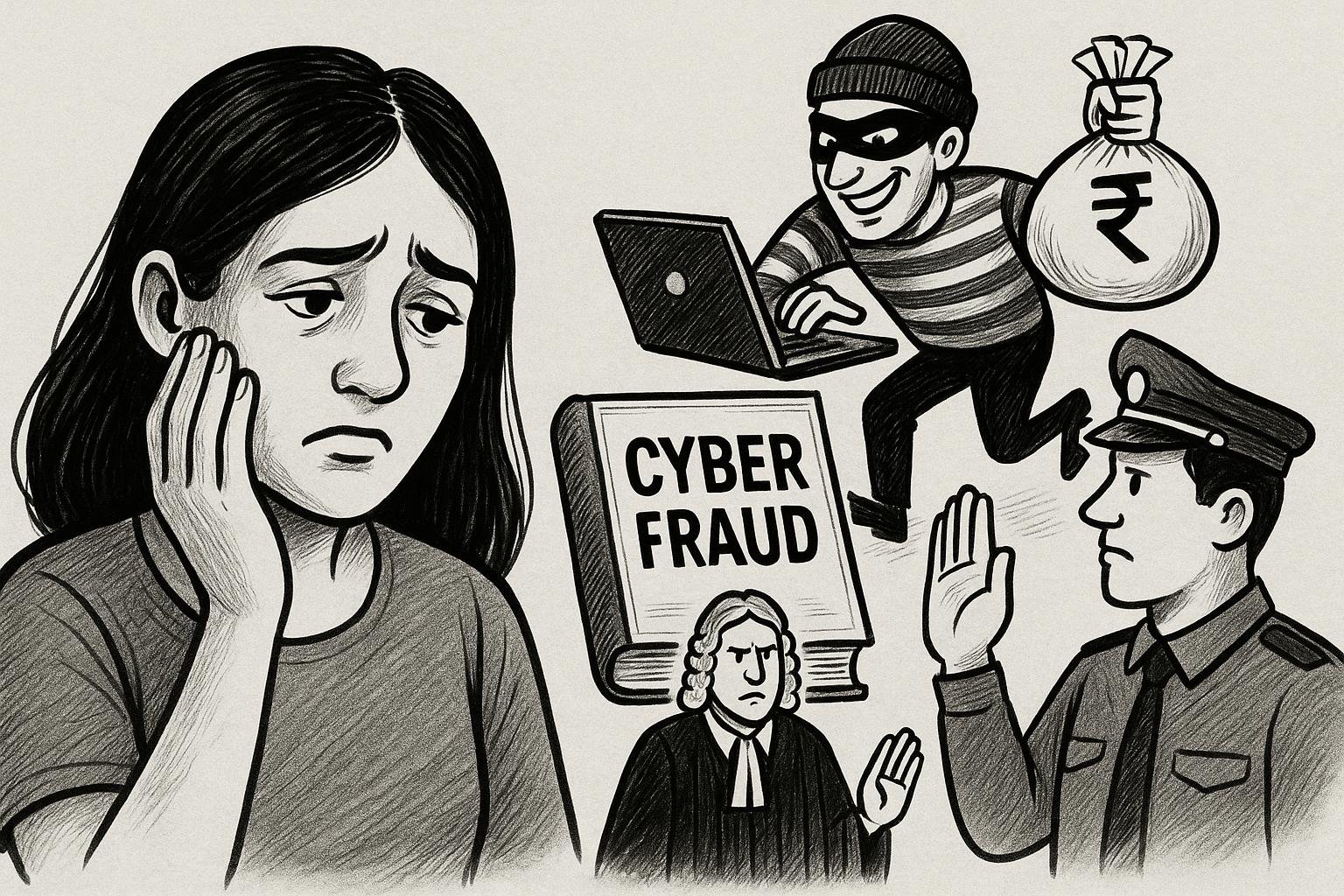When Aditya Sharma, a young marketing professional from Pune, discovered that Rs 2.2 lakh had vanished from his savings account last December, he immediately turned to the authorities.
His bank froze the suspicious transactions within hours. He filed an FIR with the local cybercrime police, contacted the national cyber helpline (1930), and submitted all required documents. Yet, four months later, Aditya is still waiting for his money — caught in an exhausting legal and procedural maze.
His case is far from isolated. Across India, victims of cybercrime are learning that while the system has evolved to respond quickly to fraud reports, the process of actually recovering lost money remains painfully slow, fragmented, and riddled with legal complexities.
The Legal Trap: Where Recovery Stalls
At first glance, India’s system appears equipped to handle cyber fraud recovery. Victims can report incidents through 1930, local cybercrime police can freeze beneficiary bank accounts, and banks are expected to cooperate.
However, freezing an account is merely the first step — recovering money from a frozen account is an entirely different legal battle.
Once police freeze an account suspected of receiving fraud proceeds, the law demands that a victim initiate formal legal action to reclaim the funds. This involves:
-
Filing a case in a magistrate’s court or competent authority.
-
Establishing a clear ownership claim over the frozen money.
-
Proving that the transaction was fraudulent and non-consensual.
-
Overcoming any competing claims from banks or third parties.
Banks are legally obligated under the RBI’s KYC and anti-money laundering guidelines to block suspicious accounts, but they cannot refund frozen funds without explicit court directions. Without a judicial order, financial institutions risk liability if they release money to a party later deemed unauthorized.
ALSO READ: Call for Cyber Experts: Join FCRF Academy as Trainers and Course Creators
A cyber law specialist, explains:
“The bank is just a custodian. It cannot decide ownership. Only the courts can. Until a magistrate or a civil judge formally orders restitution, the bank holds the funds in limbo.”
This legal safeguard, while protecting the rights of all parties, inadvertently penalizes victims — adding months, sometimes years, to the recovery process.
The Illusion of “Fast-Track” Recovery
Though India’s cybercrime response has evolved with SOPs (Standard Operating Procedures) for immediate action, there is no dedicated fast-track judicial mechanism for fund recovery in cyber fraud cases.
The burden of proof lies entirely with the victim:
-
Victims must produce evidence like FIRs, bank statements, and communications showing lack of consent.
-
Courts typically require high standards of verification, fearing wrongful restitution or future liability.
-
Cross-jurisdictional complexities emerge when fraudsters route money through multiple accounts across different states.
Moreover, each account holder in the money trail must be summoned and heard — even if they are “money mules” unaware of their involvement. This procedural fairness, though constitutionally necessary, drastically slows the recovery process.
“There’s no presumption in favor of the victim,” says expert. “The system starts from scratch, even when the fraud is obvious.”
Another compounding problem is the absence of clear legislative guidelines specifically dealing with cyber fraud recovery. Provisions under the Information Technology Act, 2000, the Bharatiya Nyaya Sanhita provide for prosecution but do not offer a direct, simplified civil recovery framework. Civil lawsuits for recovery under the Code of Civil Procedure (CPC) can take years.
The Role of Law Enforcement and Financial Institutions
Police can freeze accounts under Section 106 of the Bharatiya Nagrik Suraksha Sanhita, which allows seizure of property suspected to be linked to a crime. But BNSS is a procedural criminal law tool — it doesn’t guarantee restitution to victims.
Similarly, fintech companies, wallet providers, and online payment gateways though legally mandated to assist often cite “data protection” and “privacy laws” to delay furnishing transaction details, further slowing investigations.
Another critical issue is that bankers and cyber police lack standardized protocols across states. Some banks act swiftly; others insist on extensive documentation. Some police departments proactively coordinate with banks, while others are bogged down by jurisdictional squabbles.
As Aditya Sharma recalls,
“Each officer had a different version of what the next step was. No one could tell me clearly how or when I’d see my money again.”
Victims’ Last Resort: Negotiations, Settlements, and the Waiting Game
Faced with endless legal hurdles, many victims end up negotiating informal settlements with intermediary account holders (money mules) or simply abandon the chase, absorbing the financial loss.
Lawyers warn that these informal recoveries, while pragmatic, risk violating legal principles if not documented through proper legal channels. Victims desperate for closure often walk into traps set by fraudsters offering “partial refunds” against withdrawal of complaints.
Meanwhile, court delays due to overburdened dockets, lack of forensic evidence in some cases, and police understaffing result in cases stretching indefinitely.

The Way Forward: Need for Structural Reforms
Experts argue that India urgently needs:
-
A dedicated “Cyber Fraud Recovery Tribunal” to fast-track victim claims.
-
Presumptive burden of proof rules that favor cyber fraud victims where prima facie evidence exists.
-
Stronger penalties for financial institutions delaying compliance with investigation requests.
-
Simplified procedures for small-value frauds (say up to Rs 5 lakh) where refunds can be expedited without full civil trials.
-
Centralized database linking police, banks, and fintechs for real-time fraud tracing.
Until such reforms materialize, victims like Aditya Sharma will remain entangled in a system where doing everything “by the book” often leads nowhere.
Aditya says,
“In the end, the system feels fair on paper, but if justice takes years, it isn’t justice at all.”
Disclaimer: Names and characters mentioned in this story, such as Aditya Sharma are fictional. Any resemblance to actual persons, living or dead, is purely coincidental.


